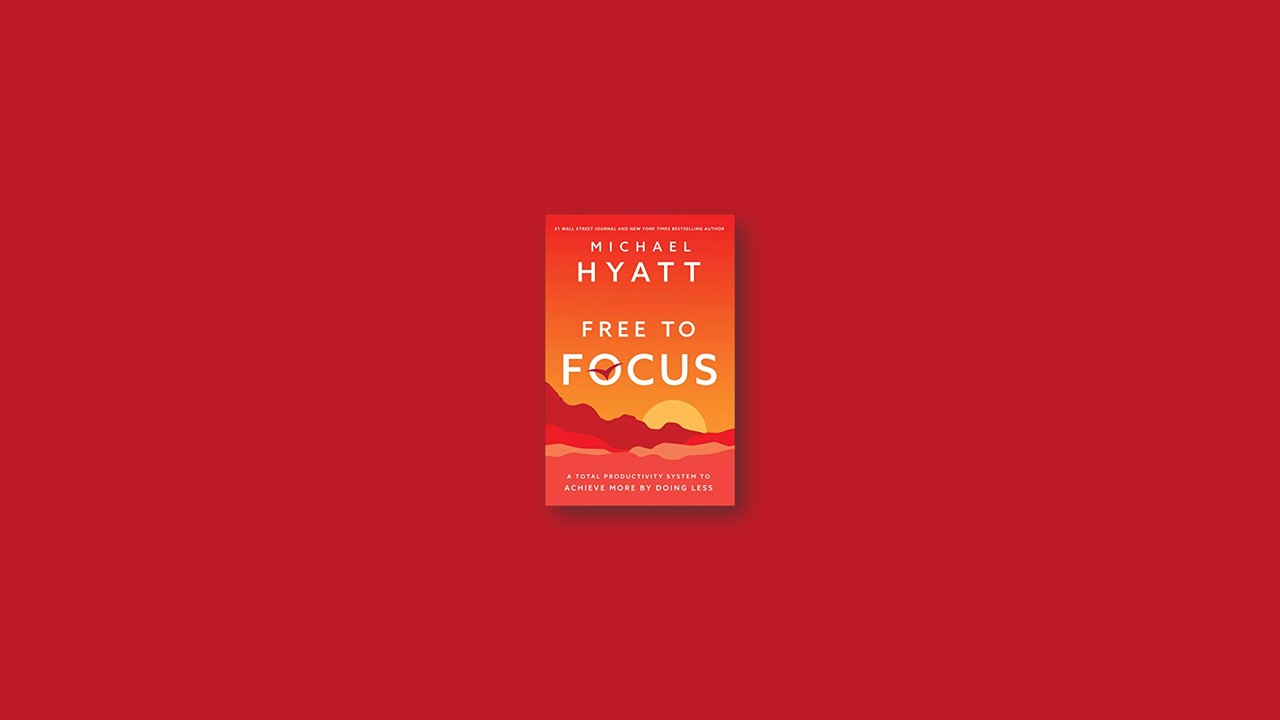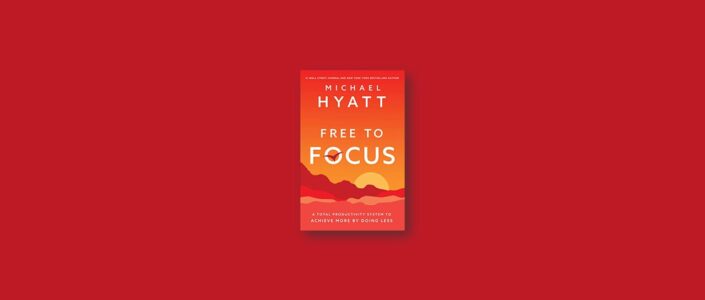Stepping into Focus
Information is no longer scarce. But attention is. In fact, in a world where information is freely available, focus becomes one of the most valuable commodities in the workplace. But for most of us, work is the hardest place to find it. The truth is we live and labor in the Distraction Economy. As journalist Oliver Burkeman says, “Your attention is being spammed all day long.”
We’ve all experienced it. Our devices, apps, and tools make us think we’re saving time, being hyper productive. In reality most of us just jam our day with the buzz and grind of low-value activity. We don’t invest our time in big and important projects. Instead, we’re tyrannized by tiny tasks. One pair of workplace consultants found “about half the work that people do fails to advance [their] organizations’ strategies.” In other words, half the effort and hours invested produce no positive results for the business. They call it “fake work.”
We’re doing more and gaining less, which leaves us with a huge gap between what we want to achieve and what we actually accomplish.
A New Approach
The most productive business leaders recognize productivity is not about getting more things done; it’s about getting the right things done. It’s about starting each day with clarity and ending with a sense of satisfaction, accomplishment, and energy to spare. It’s about achieving more by doing less, and this book shows you how.
Free to Focus is a total productivity system that follows three simple steps, composed of three actions each. I’ve arranged the steps to help you gain momentum as you go, so resist the temptation to jump ahead.
Step 1: Stop
I know what you’re thinking: “Stop? That can’t be the right word. Shouldn’t the first step in a productivity system be Go?” No. In fact, that’s where most productivity systems get it wrong. They jump right to showing you how to work better or faster, but they never stop to ask, Why? What’s the purpose of productivity? There’s a lot at stake with the answer. Unless you first know why you’re working, you can’t properly evaluate how you’re working. That’s why Free to Focus suggests to truly start you must stop.
For the first action, you’ll Formulate. This will help you clarify what you want out of productivity. We’ll reframe productivity so it works in the real world, instead of the wrong side of the Looking Glass. Second, you’ll Evaluate, identifying and filtering your high-leverage activity from low-leverage busy work. You’ll also discover a tool that, if used correctly, will completely revolutionize how, when, and where you spend most of your energy. Finally, you’ll Rejuvenate by discovering how to leverage rest to boost your results.
Step 2: Cut
Once you have a clear view of where you are and what you want, it’s time to move to Step 2: Cut. Here you’ll discover that what you don’t do is just as important to your productivity as what you do. Michelangelo didn’t create David by adding marble. Ready to break out your chisel?
First, you’ll Eliminate. You’ll discover the two most powerful words in productivity and how to use them to banish the time bandits stealing your hours. Second, you’ll Automate, gaining back time and attention by accomplishing low-leverage tasks in the background without much effort. Finally, you’ll Delegate. It’s a terrifying word for many, but don’t worry. I’ll reveal an effective method for getting work off your plate and ensuring it gets done to your standards.
Step 3: Act
Having cut out all the nonessentials, it’s time for execution. In this section you’ll learn how to accomplish your high-leverage tasks in less time and, more importantly, with less stress.
Your first action here is Consolidate, which will help you leverage three distinct categories of activity and maximize your focus. Next, you’ll Designate.
You’ll learn to stage tasks so they fit your schedule and hold back the tyranny of the urgent. Last, you’ll Activate by eliminating interruptions and distractions and making maximal use of your unique skills and abilities.
Your days of getting derailed by nonstop interruptions and an out-of-control to-do list are over. Your nights of lying in bed exhausted from a busy day but unsure of what you actually accomplished are done.
It’s time to hit the reset button on your life and finally put a system in place that ensures the time and energy to accomplish your most important goals, both in and out of the office.
Can you imagine it? Can you picture when you feel fully in control of where your time is going, when you get to decide how to spend your precious energy, and when you hit the pillow at night still energized from a productive, satisfying day? I hope you can, because that time is coming. You really can accomplish more by doing less. Take the first step and discover how.
Put Your Focus to Work
Here’s a start-to-finish success path you can follow beginning right now.
- Clear the decks. Carve out some margin so you can focus on implementing Free to Focus. Triage your calendar and make whatever arrangements you need to buy yourself some time. If you have an assistant, loop them into this process.
- Set your baseline. Use the Free to Focus Productivity Assessment to establish your productivity baseline. You can find that at FreeToFocus.com/assessment.
- Clarify your objective. Get clear on the goal of productivity. It’s about doing more of the right things, not simply doing more. High performance for its own sake is just burnout waiting to happen.
- Find true north. Use the Task Filter and Freedom Compass to identify what’s working for you now and what’s not.
- Schedule margin. Reserve mornings, evenings, and weekends for rejuvenation so you’ve got the mental and emotional energy to maximize your focus.
- Prune the overgrowth. Create a Not-to-Do List using your Freedom Compass and start eliminating everything you can from your calendar and task list—both now and going forward.
- Stop thinking about it. Look at your regular activities—especially morning and evening, workday startup and shutdown—and establish some rituals you can follow. Invent the wheel once and it’ll keep rolling even if you stop paying attention. Next, identify three or four necessary tasks or processes you can automate, starting right away.
- Offload everything you can. Using the Delegation Hierarchy, start offloading tasks to other members of your team. Don’t have a team? Find some freelance help. The more time you spend in your Desire Zone the greater the contribution you’ll make, and that means you can afford the help.
- Plan an Ideal Week. The future is fuzzy. Give it some firm lines by establishing when you want to do what. This is the best way to ensure you get the margin you need and have time to focus on what matters most.
- Design your week and day. Use the Weekly Preview along with the Weekly and Daily Big 3 to keep track of your goals and key projects and execute your essential tasks, day in and out.
- Beat interruptions and distractions. Interruptions and distractions can derail your day, but they don’t have to. You have far more control over disruptions than you might realize.
It can take a while to get dialed in, but you’ve got what it takes. As a high-achiever, you’re not only up for a challenge, you’re also an expert in rising to the occasion and reaping the rewards.


